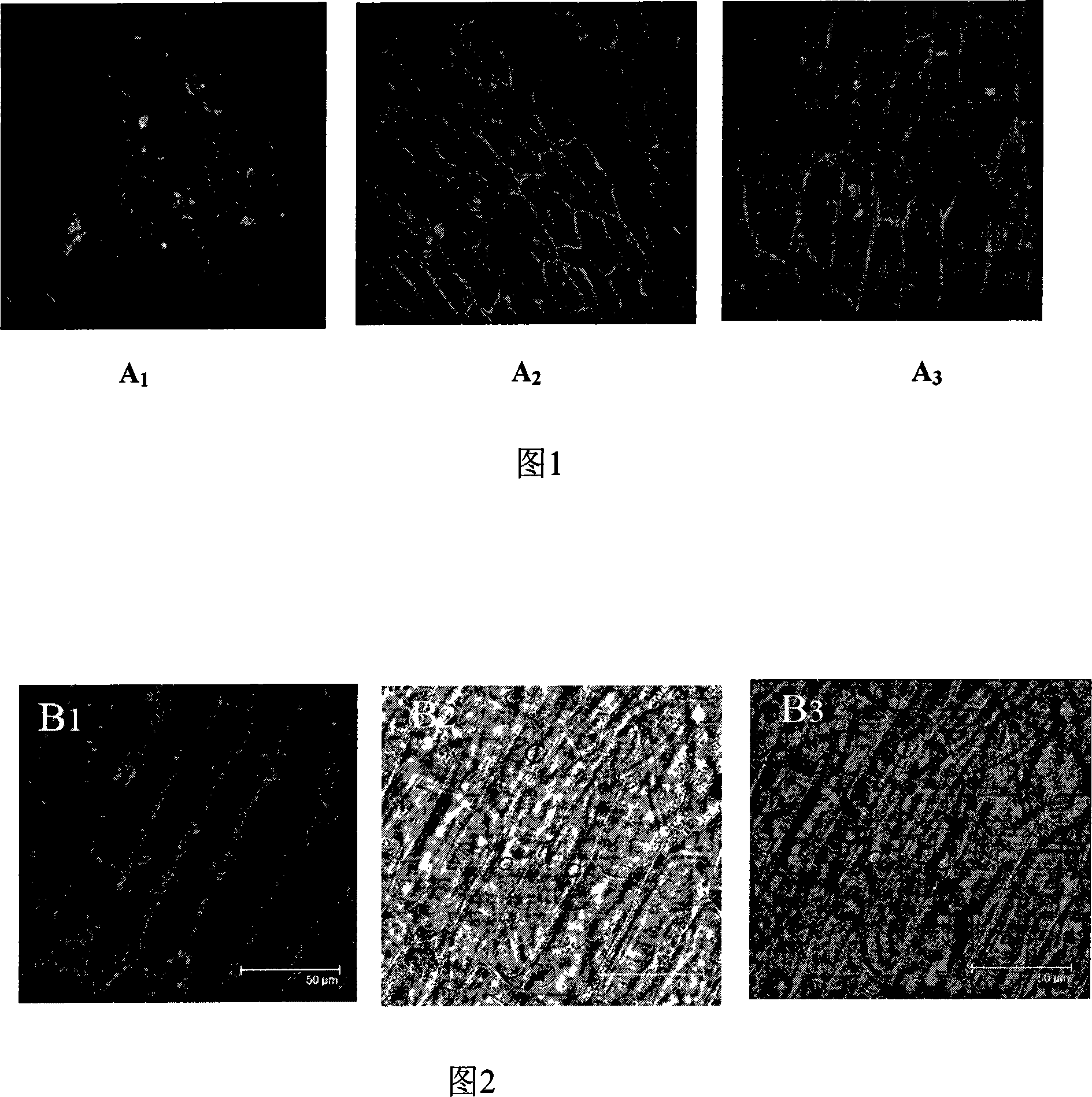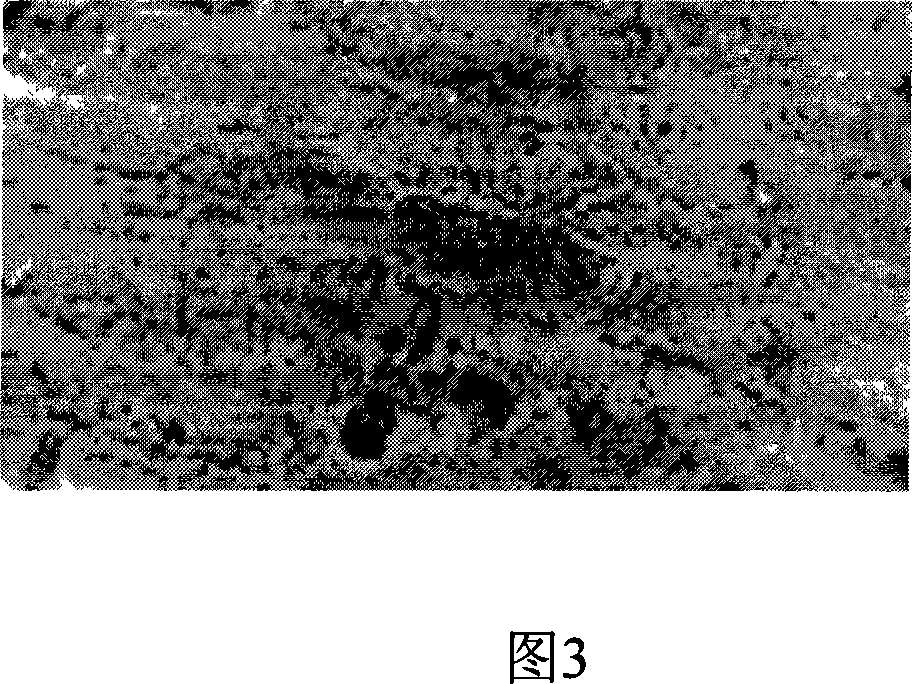Agrobacterium mediated onion epidermis cell conversion method
A technology mediated by Agrobacterium and epidermal cells, applied in the direction of introducing foreign genetic material using vectors, recombinant DNA technology, etc., can solve the problems of high cost, high equipment requirements, and difficulty in onion epidermal cells, and achieve high-efficiency transformation and low cost. cost effect
- Summary
- Abstract
- Description
- Claims
- Application Information
AI Technical Summary
Problems solved by technology
Method used
Image
Examples
Embodiment 1
[0020] Example 1: Agrobacterium-mediated onion epidermal cell transformation method for promoter activity identification
[0021] (1) Select fresh and well-growth onion bulbs, remove 3-5 layers of scale leaves on the outer layer of the onion bulb in the aseptic environment of the superfloating workbench, soak the bulbs in 75% ethanol for 10 minutes, and use Wash with sterile water 3 times. Use a sterile scalpel to cut the onion bulb in a cross shape, take the bulb leaf in the middle layer close to the inside of the bulb, and use a blade to gently scratch out an area of about 1cm on the inner epidermis (concave surface) 2 Then use tweezers to gently tear off the single-layer inner skin of the onion.
[0022] (2) Taking the promoter pasr as the research object, detecting the promoter activity of the promoter sequence. The promoter sequence and the ORF sequence of the GFP reporter gene were connected into the pCAMBIA1391Z vector, and the promoter plant expression vector pCAMB...
Embodiment 2
[0025] Example 2: Agrobacterium-mediated onion epidermal cell transformation method is used to study the subcellular localization of proteins
[0026] (1) Select fresh and well-growth onion bulbs, remove 3-5 layers of scale leaves on the outer layer of the onion bulb in the aseptic environment of the superfloating workbench, soak the bulbs in 75% ethanol for 10 minutes, and use Wash with sterile water 3 times. Use a sterile scalpel to cut the onion bulb in a cross shape, take the bulb leaf in the middle layer close to the inside of the bulb, and use a blade to gently scratch out an area of about 1cm on the inner epidermis (concave surface) 2 Then use tweezers to gently tear off the single-layer inner skin of the onion.
[0027](2) Inoculate the Agrobacterium LBA4404 identified as positive carrying the pCAMBIA1301-MpASR-GFP plasmid into 50ml liquid YEB liquid culture medium (containing 125ug / ml streptomycin, 50ug / ml kanamycin Suspension, 100mMol / L acetosyringone), cultured ...
Embodiment 3
[0030] Example 3: Combined use of Agrobacterium-mediated onion epidermal cell transformation and GUS reporter gene
[0031] (1) Select fresh and well-growth onion bulbs, remove 3-5 layers of scale leaves on the outer layer of the onion bulb in the aseptic environment of the superfloating workbench, soak the bulbs in 75% ethanol for 10 minutes, and use Wash 2 times with sterile water. Use a sterile scalpel to cut the onion bulb in a cross shape, take the bulb leaf in the middle layer close to the inside of the bulb, and use a blade to gently scratch out an area of about 1cm on the inner epidermis (concave surface) 2 Then use tweezers to gently tear off the single-layer inner skin of the onion.
[0032] (2) A plant expression vector pCAMBIA1391Z-pasr-gus was constructed by linking the gus reporter gene with the promoter pasr, and transformed into Agrobacterium EHA105 strain. In YEB liquid medium (containing 50 mg / L kanamycin, 125 mg / L streptomycin and 100 mMol / L acetosyringo...
PUM
 Login to View More
Login to View More Abstract
Description
Claims
Application Information
 Login to View More
Login to View More - R&D
- Intellectual Property
- Life Sciences
- Materials
- Tech Scout
- Unparalleled Data Quality
- Higher Quality Content
- 60% Fewer Hallucinations
Browse by: Latest US Patents, China's latest patents, Technical Efficacy Thesaurus, Application Domain, Technology Topic, Popular Technical Reports.
© 2025 PatSnap. All rights reserved.Legal|Privacy policy|Modern Slavery Act Transparency Statement|Sitemap|About US| Contact US: help@patsnap.com


